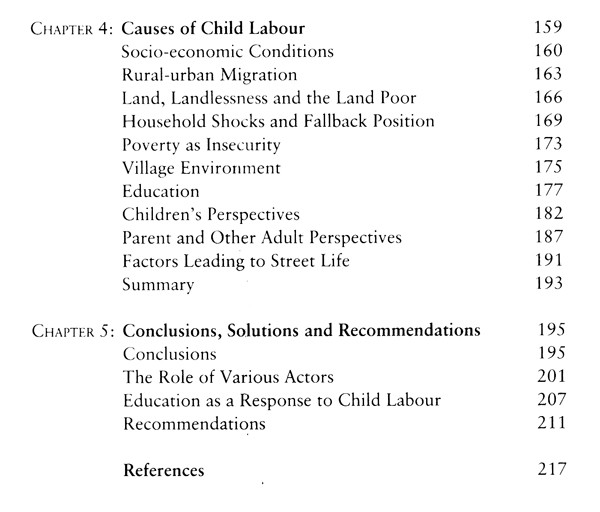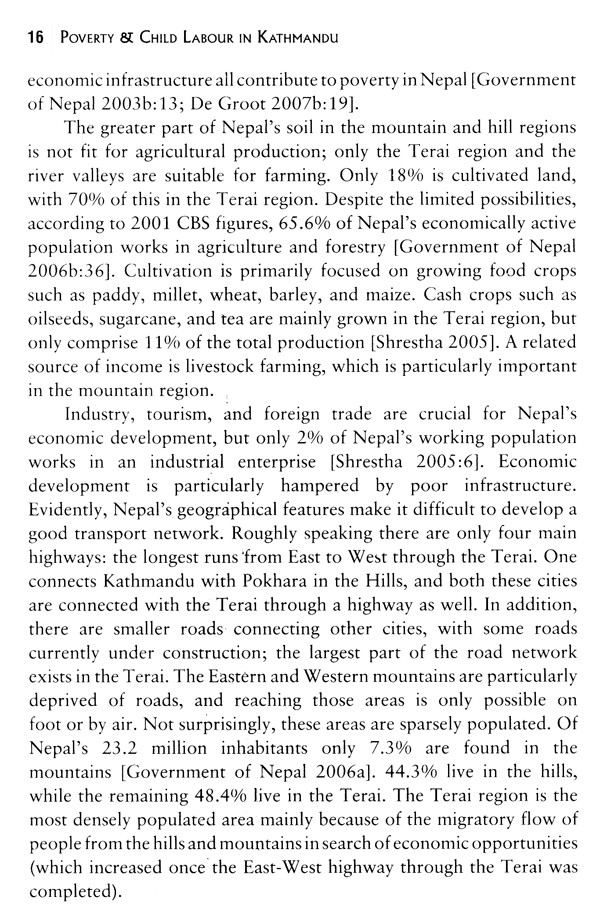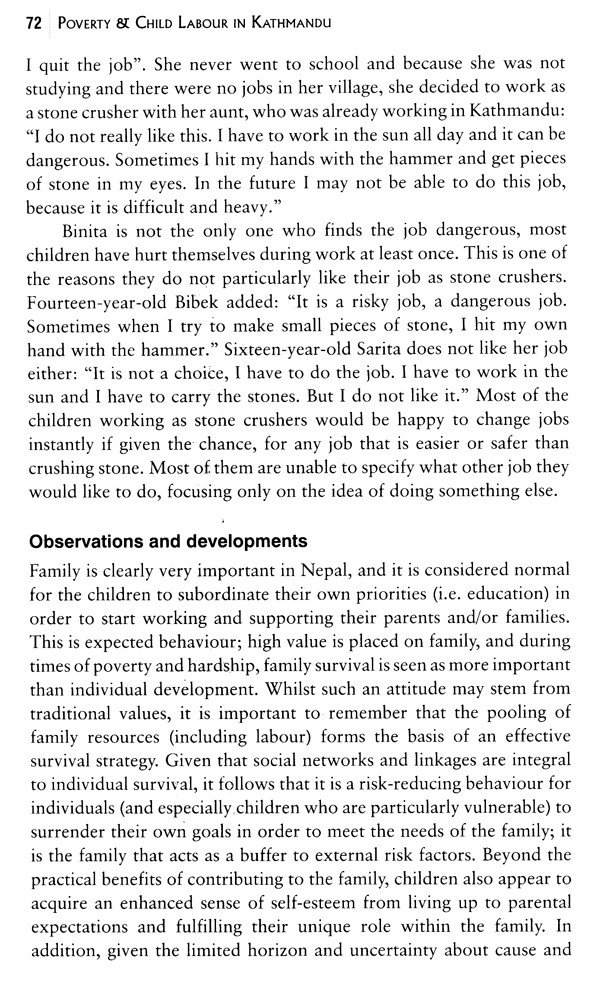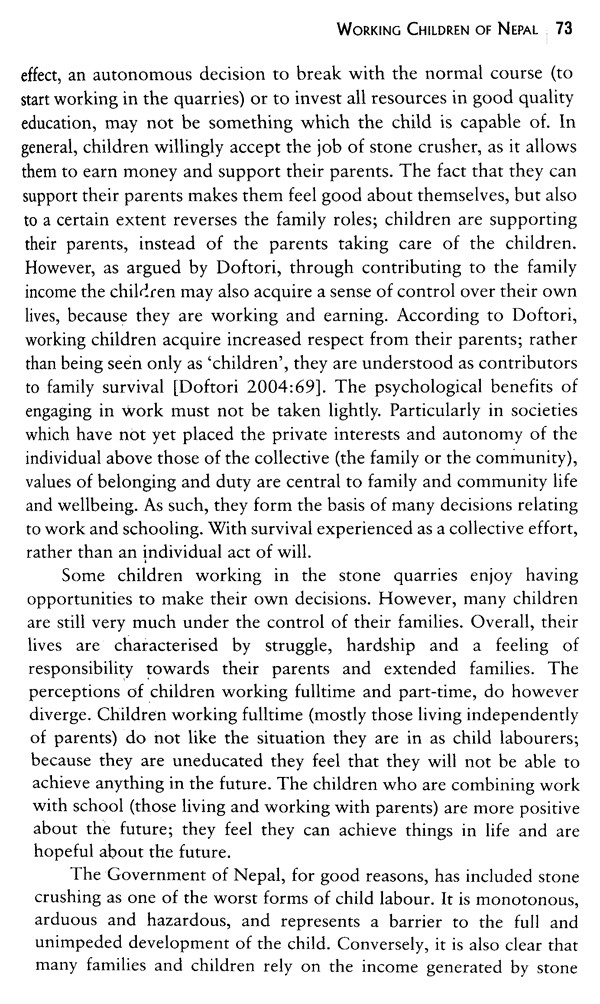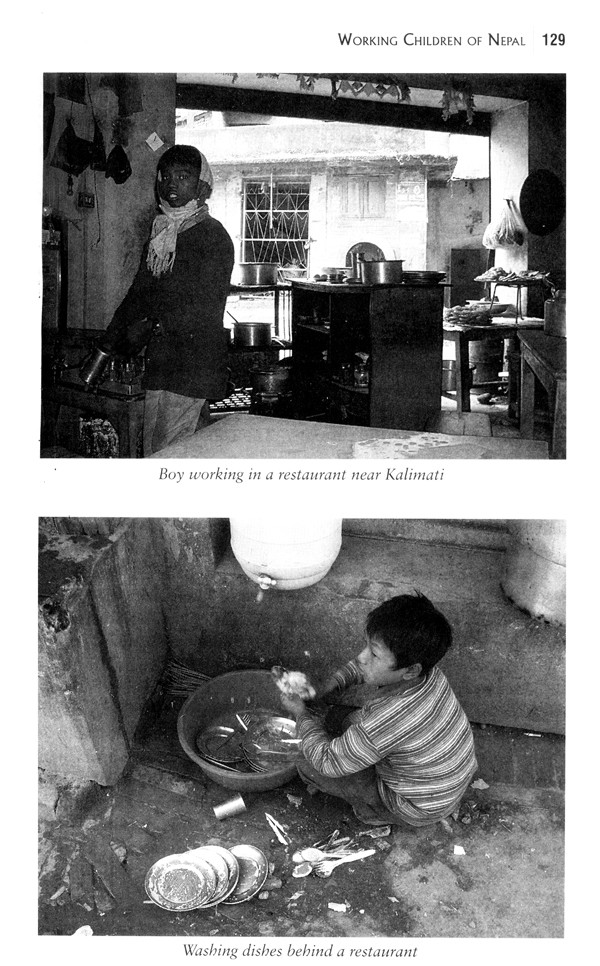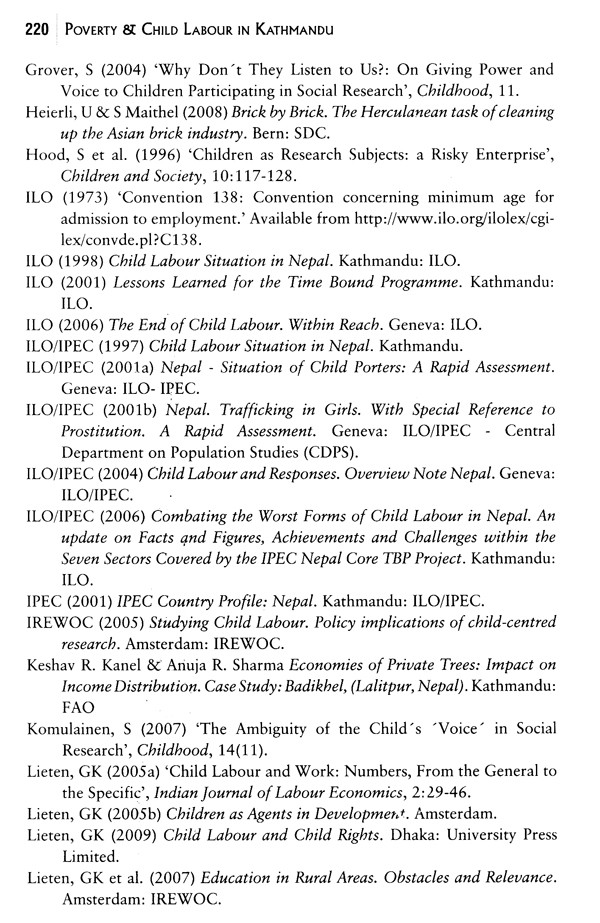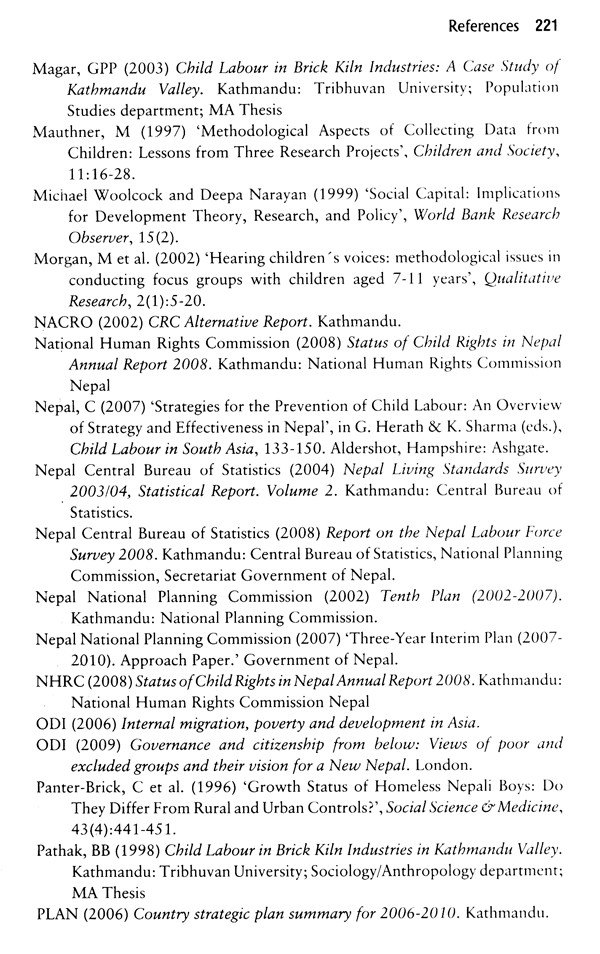
Poverty & Child Labour in Kathmandu
Book Specification
| Item Code: | UAT787 |
| Author: | Eowyn Castle, Afke de Groot and Marieke Haitsma |
| Publisher: | Mandala Book Point, Nepal |
| Language: | English |
| Edition: | 2012 |
| ISBN: | 9789994655199 |
| Pages: | 234 (Throughout B/w Illustrations) |
| Cover: | PAPERBACK |
| Other Details | 8.50 X 5.50 inch |
| Weight | 320 gm |
Book Description
The Convention on the Worst Forms of Child Labor suggests that there are other forms of child labor as well. Children all over the world do some kind of work; some of this work is socially and pedagogically suitable. Other work, however, is not. That is when innocent work turns into labor. The ILO, right since its start in 1919, has developed policies aimed to eradicate such child labor. Convention 138 (1973) set the broad age-wage parameters for the permissible entry into the labor market. Children below the age of 12 are not allowed to work and children between 12 and 14 are allowed to do only light work, which does not interfere with schooling and does not impair their physical, emotional and intellectual development. Convention 182 further specifies which forms of child labor should be eliminated in the best interest of the child. It defines 2 categories of worst forms of child labor:
The unconditional worst forms include slave labor, prostitution and pornography, participants in armed conflicts and illicit traders.
**Contents and Sample Pages**


